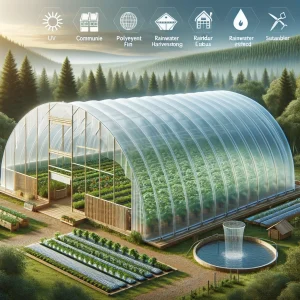Whether you’re a seasoned gardener or a green-thumbed beginner, the allure of a DIY greenhouse is universal. The ability to extend the growing season, nurture seedlings, and grow exotic plants is enticing. A greenhouse can make all the difference in British Columbia’s varied climate. Using sustainable practices and materials, here’s how to start your DIY greenhouse project, tailored for small, medium, and large spaces.
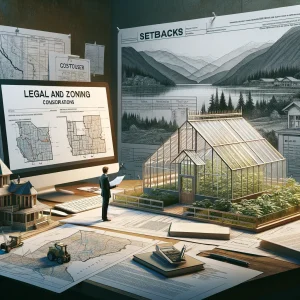
Understanding Legal and Zoning Considerations
Before diving into construction, it’s crucial to navigate the legal landscape. British Columbia’s zoning regulations can vary significantly from one municipality to another. Generally, greenhouses are considered accessory buildings and may require a permit, especially for larger structures. Contact your local planning department to ensure your project complies with all regulations, including setbacks, height restrictions, and building codes.

Choosing the Right Size and Materials
Small Greenhouses: Perfect for urban gardeners or those with limited space. A lean-to or window-attached greenhouse can be a great start. Using recycled windows and frames can add character while being eco-friendly.
Medium Greenhouses: A freestanding structure, approximately 10×10 feet, can offer ample space for various plants without overtaking your backyard. Polycarbonate panels are a durable, energy-efficient choice, providing excellent plant light diffusion.
Large Greenhouses: Ideal for severe gardeners or those looking to produce food year-round. Consider a hoop house or a barn-style greenhouse. Using reclaimed wood for the frame and UV-resistant polyethylene film can create a sustainable, large-scale growing environment.
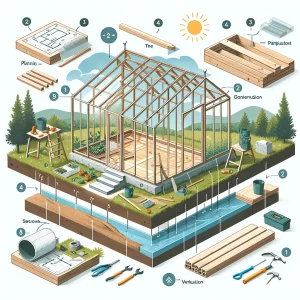
Step-by-Step Building Guide for Beginners
- Plan Your Space: Measure and mark the area. Consider sunlight, wind direction, and accessibility.
- Foundation and Frame: For durability, anchor your greenhouse to a solid foundation like concrete piers or a wooden base. Assemble your frame according to the size and material chosen.
- Covering: Attach your glazing material selected. Ensure it’s tight and secure to retain heat and resist the elements.
- Ventilation: Install roof vents or side vents for air circulation. Automated vent openers can be a convenient addition.
- Watering and Temperature Control: Set up a rainwater collection system for an eco-friendly watering solution. Consider a solar-powered heater for colder months and shade cloths for overheating prevention.
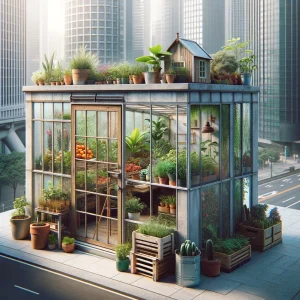
Real-Life Examples
Small: In Victoria, Emma transformed her balcony into a lush oasis using an old bookshelf and transparent polycarbonate sheets, proving that even the smallest spaces can host a green haven.
Medium: The Thompson family in Kelowna built a medium-sized, freestanding greenhouse using cedar wood and recycled windows. It has become the centrepiece of its organic vegetable garden, providing food throughout the year.
Large: Near Prince George’s, a community-led initiative created a large hoop house. This greenhouse uses UV-resistant polyethylene and a rainwater harvesting system to support a community garden that feeds several families.
Avoiding Common Pitfalls
- Overheating: Proper ventilation and shading are key. Overheating can be as detrimental as the cold.
- Poor Location: A spot with insufficient sunlight or exposure to strong winds can hinder your greenhouse’s effectiveness.
- Ignoring Local Climate: Plants suited for British Columbia’s climate will thrive best. Research and choose accordingly.
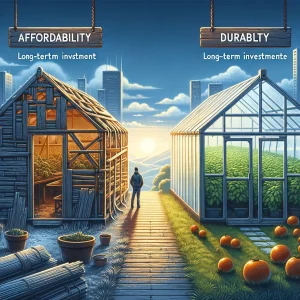
Balancing Affordability with Durability
Your greenhouse should be a long-term investment. While it’s tempting to go for the cheapest options, consider the longevity and maintenance of your materials. Investing more in durable materials can save money and effort in the long run.
Building a DIY greenhouse in British Columbia is a rewarding project that can enhance your gardening experience, make a positive environmental impact, and contribute to your community. By starting with thorough planning, choosing suitable materials, and learning from real-life examples, you can construct a greenhouse that fits your needs and nurtures your green thumb.
Remember, every greenhouse tells a story of growth, resilience, and sustainability. Start writing yours today.
